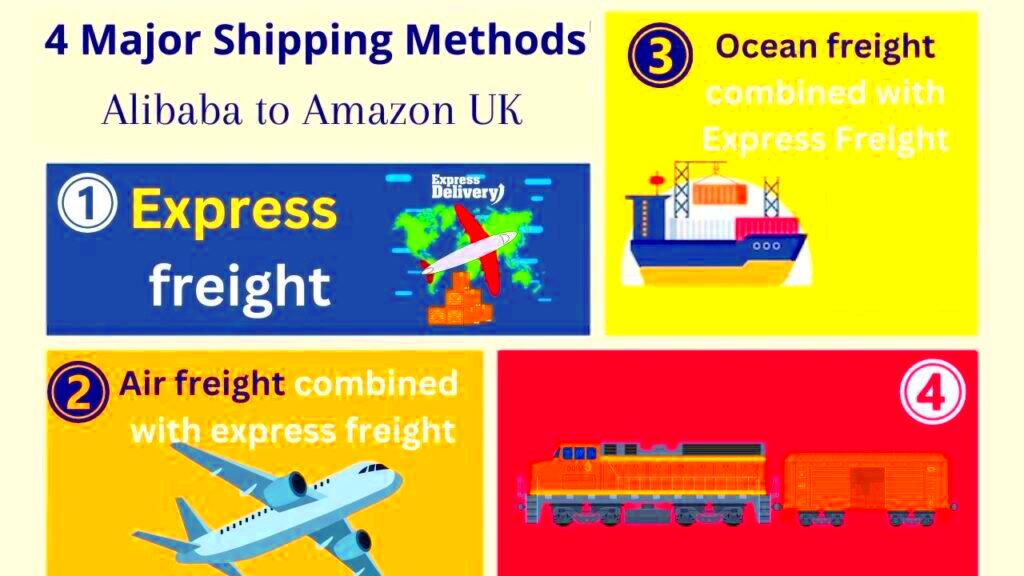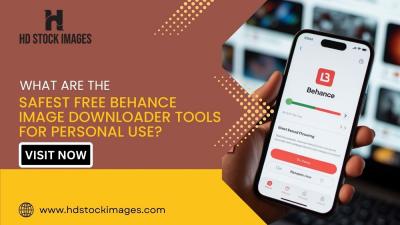When it comes to exploring the realm of commerce knowing the ins and outs of shipping between
Alibaba and Amazon can make a significant difference.
Alibaba offers a wide range of products sourced from manufacturers and suppliers while Amazon serves as the platform for selling those products. However in order to transport your goods fromTo begin with
Alibaba serves as a platform for finding products, whether you’re looking to buy in quantity or have something specially made. After selecting your items you will need to arrange for their shipment to Amazons warehouses. This process consists of multiple stages.
- Supplier Coordination: Communicate clearly with your supplier about shipping requirements.
- Shipping Method: Decide whether you’ll use sea freight, air freight, or another method.
- Import Regulations: Be aware of customs regulations and import duties.
Having taken care of shipments personally, I can assure you that careful planning is key. Its crucial to grasp the schedules and expenses at play to steer clear of any unexpected surprises.
Choosing the Right Shipping Method for Your Needs

Selecting the shipping option can be a daunting task but it plays a role in ensuring your products reach their destination punctually and in excellent shape. Here’s a brief overview of the key shipping choices you may want to explore:
- Sea Freight: Ideal for large volumes of goods. It’s cost-effective but slower compared to other methods.
- Air Freight: Faster but more expensive. Great for high-value or urgent items.
- Courier Services: Suitable for smaller shipments. It’s convenient but can be pricier.
Based on what I've seen if you're new to this sea freight could be the most cost effective choice. But if you want your goods fast its worth splurging on air freight. Its essential to weigh your budget against how soon you need your shipment.
Steps to Prepare Your Alibaba Shipment for Amazon

Preparing your shipment from
Alibaba for delivery to Amazons warehouses demands careful consideration. Heres a comprehensive walkthrough to guarantee a seamless experience.
- Verify Product Details: Double-check the quantity, quality, and specifications of your products.
- Labeling: Ensure all products are labeled correctly according to Amazon’s guidelines. This includes barcodes and SKU labels.
- Packaging: Pack your products securely to prevent damage during transit. Consider using bubble wrap or foam for fragile items.
- Documentation: Prepare all necessary shipping documents, including invoices, packing lists, and customs declarations.
- Shipping Arrangement: Choose a reliable freight forwarder who can handle both the shipping and the customs clearance.
Through my experiences, I have learned that careful planning brings rewards. Making sure everything is in order before the shipment departs can spare you from a lot of troubles later on. Believe me when I say that a shipment that is prepared will simplify your life significantly.
How to Handle Customs and Import Duties

Navigating customs and import taxes can be a bit of a challenge, but with the strategy it becomes easier. I recall my initial experience with customs – I was anxious, unsure if I had completed the paperwork accurately or paid the necessary charges. However as time went on I discovered some tips to streamline the process.The key takeaway is that customs involves more than just handling documents; it’s about making sure your shipment meets all the rules of the country you’re sending it to. To simplify the process here are a few steps to follow.
- Check Import Rules: Each country has different import regulations. Look into the specific rules for the country you’re shipping to.
- Understand Duties and Taxes: You’ll need to pay import duties, taxes, or VAT. These vary based on the value and type of goods you're importing.
- Work with a Customs Broker: If it feels overwhelming, hiring a customs broker can save you a lot of time and ensure everything is handled professionally.
- Prepare Proper Documentation: Make sure your invoice, packing list, and bill of lading are complete and accurate. Missing documents can delay your shipment.
Believe me, after you’ve navigated the customs procedures a few times it becomes like second nature. It’s really just a matter of staying organized and thinking ahead.
Packaging Tips for Safe Delivery
The way you package your shipment can really impact its outcome. I’ve experienced my fair share of goods getting damaged because of packaging and it taught me a lesson about the importance of getting it right. Whether you’re sending items or more durable products how they’re packed will determine if they reach their destination intact.Here are some suggestions that have spared me from numerous troubles.
- Choose the Right Box: Always use a box that’s strong enough for your product. If the box is too weak, it might collapse during transit.
- Use Padding: For fragile items, bubble wrap, foam, or airbags work wonders. Make sure there’s enough padding to prevent movement inside the box.
- Seal Properly: Use heavy-duty tape to seal all openings. I’ve seen boxes pop open because of weak sealing – better to be safe than sorry.
- Label Fragile Items: If you’re shipping delicate items, clearly mark them as “Fragile” to encourage careful handling.
I always remind folks to picture their package getting jostled around in transit (which is likely to happen). If you've secured it so that it withstands a few bumps you've nailed it!
Tracking Your Shipment Effectively
Anticipating a shipment can be quite stressful, particularly when it involves shipping. The uncertainty of your packages whereabouts and its timely arrival can be quite unsettling. This is where tracking comes in handy. Having the ability to pinpoint the location of your shipment brings a sense of reassurance.
Here are some tips on how to keep tabs on your package shipment efficiently.- Use the Carrier’s Tracking System: Most carriers, whether it’s DHL, FedEx, or a freight forwarder, offer real-time tracking. Make sure to get the tracking number from your supplier or shipping company.
- Set Up Alerts: Many carriers offer email or SMS updates. I personally find these super helpful because I don’t have to constantly check the tracking site.
- Stay in Touch with the Supplier: Sometimes, suppliers have additional tracking information, especially for the initial stages of shipment. Don’t hesitate to ask them for updates.
- Be Aware of Customs Delays: If your shipment gets stuck in customs, tracking will usually indicate this. Be patient and prepare for a slight delay.
Based on what I’ve seen keeping tabs on your shipment not only helps you stay updated but also improves your communication with customers or Amazon in case of any delays. Staying informed throughout the process is always a wise move.
Managing Costs and Avoiding Common Pitfalls
When I began transporting goods from
Alibaba to Amazon keeping track of expenses was like trying to fix a leaky boat. There are numerous small costs that can accumulate if you’re not cautious. However as time went on I discovered that by adopting a strategy you can save significantly and steer clear of pitfalls.
Here are some insights that I think are really useful when it comes to keeping expenses in check managing costs.- Plan for Shipping Costs: Don’t just focus on the price of the product. Factor in shipping, customs, duties, and any additional fees. It’s tempting to overlook these, but they add up quickly.
- Negotiate with Suppliers: You’d be surprised how much you can save by negotiating the cost of goods and shipping. Even a small reduction in price can make a big difference when you’re buying in bulk.
- Choose the Right Shipping Method: Like I mentioned earlier, choosing sea freight over air can save you money, but it depends on your timeline and product type.
- Avoid Hidden Fees: Watch out for hidden fees, especially with customs. A lot of people miss this and end up paying more than they expected. I learned this the hard way when I had to pay unexpected storage fees because my shipment was delayed at customs.
By paying attention to these aspects you can steer clear of unpleasant surprises that might cut into your earnings. Believe me going through these lessons the tough way was no walk in the park but it made me more mindful of every single rupee I spent on shipping.
Tips for a Smooth Transition from Alibaba to Amazon
Moving your shipment from
Alibaba to Amazon might seem like a lot to handle, but with some careful preparation it can be a breeze. I’ve had my fair share of smooth sailing and unexpected hiccups during this process. Here are a few tips I’ve gathered to help make it less overwhelming.
Here’s what can make all the difference:- Communicate with Your Supplier: Clear communication is key. Ensure that your supplier knows Amazon’s shipping requirements and follows them to the letter. This includes everything from labeling to packaging.
- Prep Your Products for Amazon FBA: Amazon has specific rules for its Fulfillment by Amazon (FBA) service. Ensure your supplier labels everything correctly, from barcodes to SKU numbers.
- Choose a Reliable Freight Forwarder: A good freight forwarder will not only help you with shipping but will also handle customs clearance, making your life much easier. I’ve found that building a relationship with a reliable forwarder is worth its weight in gold.
- Keep Track of Documentation: Proper documentation is crucial for smooth customs clearance and seamless delivery to Amazon. Make sure everything from your commercial invoice to your bill of lading is in order.
From what I’ve seen a seamless transition comes down to being well prepared and communicating effectively. When things don’t go as planned it’s usually due to one of these aspects being neglected. However when everything falls into place it’s truly enchanting.
FAQ
How long does shipping from Alibaba to Amazon take?
The duration of shipping depends on the method selected. Sea transport may take a few weeks whereas air cargo is quicker typically within a week. That said customs procedures can lead to delays, so it's wise to allow for extra time.
Do I need to pay import duties on Alibaba shipments?
Certainly you may have to cover import fees and taxes based on the country where the goods are being sent. It’s crucial to look into these expenses in advance to avoid any surprises when your package arrives.
What’s the best way to ensure my products meet Amazon’s FBA requirements?
The most effective approach is to convey Amazon's FBA guidelines to your supplier. Share all the information regarding labeling, packaging and barcodes with them. Make sure to review everything thoroughly before shipment to prevent any complications down the line.
Can I ship directly from Alibaba to Amazon?
Absolutely you can send products straight from Alibaba to Amazon's fulfillment centers. Just ensure that your supplier adheres to Amazon's FBA standards regarding packaging and labeling and that you manage customs and paperwork correctly to prevent any hold ups.
Is it worth hiring a freight forwarder?
Based on what I’ve seen bringing on a freight forwarder can really spare you some trouble, particularly with customs clearance and managing the shipping process. If you’re just starting out with shipping I strongly suggest giving it a try.
Conclusion
Shipping from Alibaba to Amazon might seem tricky at the beginning but once you get the hang of it becomes a routine. I’ve had my fair share of frustrations with unexpected costs and delays but witnessing a shipment go smoothly from start to finish is truly rewarding. It’s all about grasping the process selecting the partners and paying attention to the details. With a dose of patience and experience you’ll realize that it’s not as intimidating as it seems. Just stay organized communicate effectively and you’ll be on your way to success!
 Selecting the shipping option can be a daunting task but it plays a role in ensuring your products reach their destination punctually and in excellent shape. Here’s a brief overview of the key shipping choices you may want to explore:
Selecting the shipping option can be a daunting task but it plays a role in ensuring your products reach their destination punctually and in excellent shape. Here’s a brief overview of the key shipping choices you may want to explore: Preparing your shipment from Alibaba for delivery to Amazons warehouses demands careful consideration. Heres a comprehensive walkthrough to guarantee a seamless experience.
Preparing your shipment from Alibaba for delivery to Amazons warehouses demands careful consideration. Heres a comprehensive walkthrough to guarantee a seamless experience. Navigating customs and import taxes can be a bit of a challenge, but with the strategy it becomes easier. I recall my initial experience with customs – I was anxious, unsure if I had completed the paperwork accurately or paid the necessary charges. However as time went on I discovered some tips to streamline the process.The key takeaway is that customs involves more than just handling documents; it’s about making sure your shipment meets all the rules of the country you’re sending it to. To simplify the process here are a few steps to follow.
Navigating customs and import taxes can be a bit of a challenge, but with the strategy it becomes easier. I recall my initial experience with customs – I was anxious, unsure if I had completed the paperwork accurately or paid the necessary charges. However as time went on I discovered some tips to streamline the process.The key takeaway is that customs involves more than just handling documents; it’s about making sure your shipment meets all the rules of the country you’re sending it to. To simplify the process here are a few steps to follow.
 admin
admin








